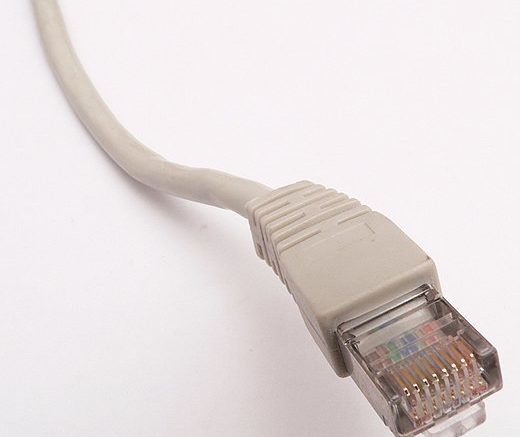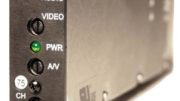A couple of weeks ago, our Solid Signal customer service reps were diagnosing an issue with a customer. This customer didn’t want to run long coax cables so they found a solution on another web site that they thought would help. They found a pair of devices that translate coax signals to Ethernet cables and back. Unfortunately, this didn’t do what they needed. It seemed like a good time to explain why that can’t be done with the tech available today.
Satellite TV is different from cable and over the air
It’s true that satellite, cable, and over-the-air all travel on coaxial cables. But there are big differences in the signal that comes from satellite dishes compared to those from cable or off-air. The biggest difference is the frequencies that are used. Television signals use a range from 54-608MHz. These relatively low frequencies travel long distances when transmitted through the air, even with relatively low power. Traditional cable TV uses frequencies from 5-1000MHz. To some degree cable frequencies mirror over-the-air ones, because at one point TV tuners were designed to work with either. Cables that are rated for only 1000MHz also end up being cheaper, and in the days before most information was carried over fiber, cable companies used a lot of coaxial cable. (Hey, it’s even in their name.)
However, satellite signals travel along a cable using frequencies as low as 2MHz and as high as 2150MHz. In order to work with such a wide spread, and especially with very weak signals like those of satellite TV, you need much better cables.
Here’s why that’s important when it comes to Ethernet
As I said, there are some devices that will take over-the-air or cable signals and convert them so they can run over Ethernet cable. Those devices only work with the frequencies used by over-the-air TV and cable TV. It wouldn’t be impossible to build this sort of converter for satellite as well, but there isn’t much demand for it so no one does it.
If you try to use one of these adapters for satellite, the result will be that the really important satellite signal, which is all in the range over 1,000 MHz, will all be lost. In short, it won’t work.
So what are the options if you want to distribute satellite TV over Ethernet cable?
If you want to use Ethernet cable to distribute satellite signals, you’re not out of luck. Yes, there are ways to do it. However, you can’t use Ethernet between the dish and the multiswitch or receivers. You can use fiber if you wish, using devices like these ones from Foxcom.
You can distribute signals to the TV using Ethernet is one of two ways. The easiest one is to use Ethernet as a substitute for HDMI. There’s a standard called HDBaseT which allows devices to send HDMI over Ethernet cable using devices from different manufacturers. Solid Signal carries a lot of HDBaseT equipment, and it all works together with each other. With HDBaseT, you connect short HDMI cables to HDBaseT adapters, and run Ethernet cable between those adapters.
The other option is IP video delivery. Using a headend like DIRECTV’s COM3000, you can distribute video over Ethernet cable. The process is very similar to streaming from Netflix or any other app, but it’s all done within the premises. The DIRECTV signals are encoded into internet protocol, and can be distributed all over the building over common cables. At the TV, the signals are decoded, either by a separate box that’s like a streaming box or by direct connection to TVs that are built for it.
Why use Ethernet cable instead of regular copper cable?
Traditional copper cable is expensive and fairly delicate. The cost really isn’t an issue if you’re running 200 feet of cable, but if you’re looking at 20,000 feet it sure adds up. In most cases, you can’t run more than 300 feet of cable without an amplifier, and with satellite systems there are some places where amplifiers can’t be used.
Ethernet cable (the real term is category cable, but most people call it Ethernet cable) is a lot less expensive because it uses a lot less copper. It’s more durable and more resistant to damage. While you really can’t run Ethernet more than about 300 feet either, Ethernet makes it easy to use inexpensive switches to extend run lengths.
In some cases, you may already have Ethernet cable in a building and therefore it can be easy to get the cables where you need them. Ethernet cables are thinner than coaxial cables, too. That may be an issue if you’re working within crowded conduits. If you’re in a state that requires plenum-rated cable, Ethernet cable can be much, much cheaper than coaxial.
What’s the best way to get your building wired for satellite?
It’s simple. Work with a company with decades of experience. Signal Connect, the full service arm of Solid Signal, has been doing DIRECTV and DISH commercial installations since 2002. We’ve been recognized by the industry as a customer service leader. We have thousands of satisfied commercial customers, and we’re anxious to work with you!
If you’re ready to do a large installation, don’t go it alone! Our team is ready to give you all the help and support you deserve. We’ll build a system that works exactly the way you need it to, then we’ll get it installed and activated on time and on budget. We’ve worked with the smallest small business and the largest enterprise and government customers. We’re ready to take on your project!
Call the experts at Signal Connect at 888-233-7563. We’re here for you during East Coast business hours. When you call, we’ll connect you with an expert who really understands your industry. Call us, or if it’s after hours fill out the form below and we’ll get right back to you!





